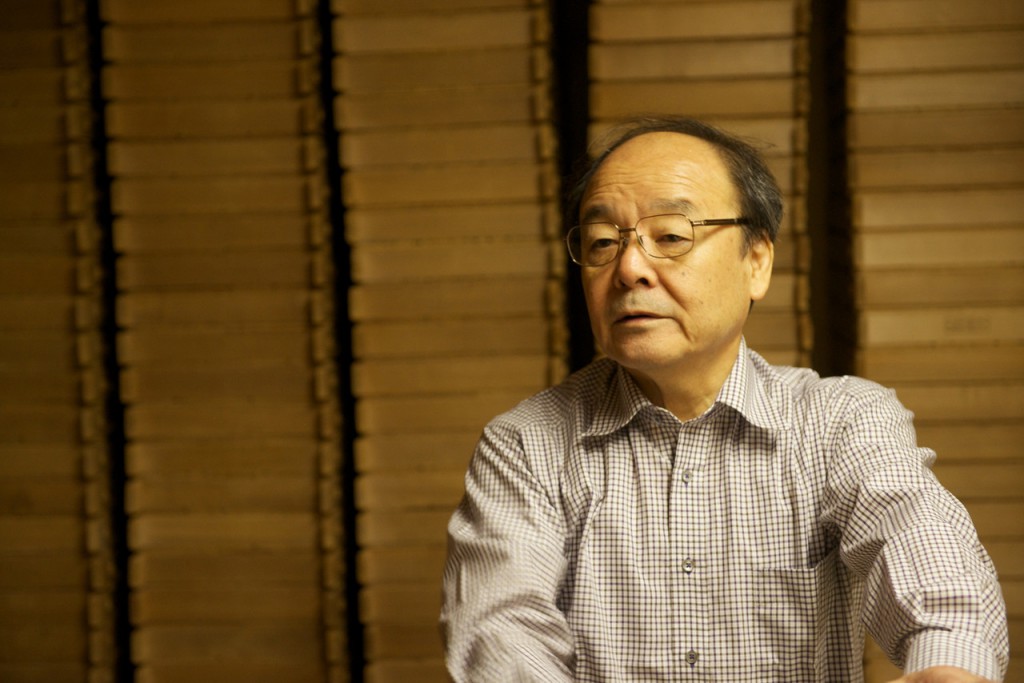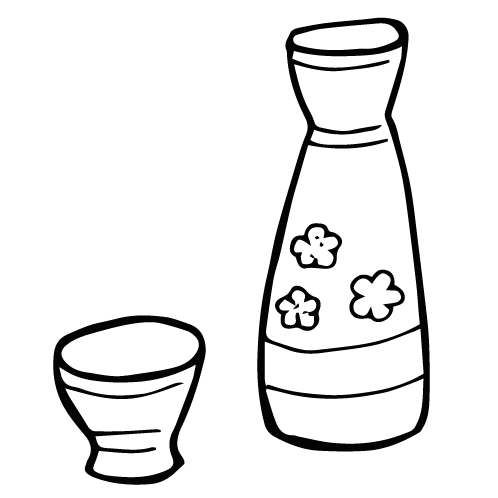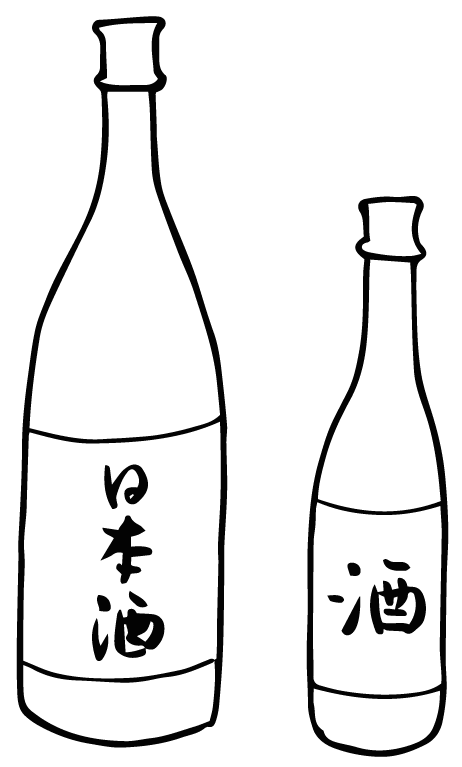THE REVOLUTION THE FIRST MAN TO REVIVED PURESAKE
– The uphill story of Shinkame Shuzo –
 There is a man called Yoshimasa Ogawahara.
There is a man called Yoshimasa Ogawahara.
Presently, there is no doubt that we are able to enjoy Japanese PureSake. PureSake is a category of sake classified as “Junmai” which is made with the simple ingredients of rice, rice Koji (aspergillus oryzae), Kobo(yeast) and water. This is the story of the man who revived PureSake brewing at the end of his lonely and fight against national policy. If he hadn’t decided to start brewing PureSake we are not sure whether or not we could drink this type of Japanese sake now.
“I didn’t want to brew what I myself didn’t want to drink”
His name is Yoshimasa Ogawahara and he is the 7th owner of Shinkame Shuzo since 1848. He says that when he was a student at Tokyo agricultural university, he determined to brew PureSake. Before WWⅡ, all of Japanese sake had to be PureSake in line with national policy. However the Japanese government changed own policy due to a lack of rice during the war period, and then the sad history of “sake with alcohol added” began. Besides this, brewery began to add not only alcohol but also sweetener and synthetic flavoring to control the sake’s taste and this type of sake had become the mainstream after the war. This type of sake, called “ Alu-Ten-Shu (sake with alcohol added after fermentation)” or “San-Zo-Shu (sake with additives that makes sake 3 times the quantity)”. Even after the “Rice Cultivation Reduction Policy” of the Japanese government, PureSake was never revived because “alcohol added sake” was national policy. All breweries had to brew 35% “San-Zo-Shu” of their total sake output by decree of the Ministry of Finance until 1972. “I was afraid that Japanese Sake would die unless the brewing of high quality sake, PureSake was resumed.” says Mr. Ogawahara. “More than anything, I wanted to brew high quality sake which I myself wanted to drink.”
The harassment continued for 20 years
“Everyone who knows me including my father, the 6th owner of our brewery, said that I had obviously become crazy.” However he made an application to enable him to brew PureSake to the taxation office but it was refused because there was no precedent. In 1967, at long last he was permitted to try brewing only 3 kLtrs of PureSake. We could say that that was the exact first moment of the rebirth of PureSake, but…
Although he had been increasing the quantity of PureSake year by year, actually a really long tough fight had been continuing throughout. “The tax officers treated the maturing sake as dead stock and gave me a limit on the quantity I was allowed to brew in the next year.” They also didn’t permit using additives to make “alcohol added” sake to intentionally harm his efforts. “All kinds of harassment continued for 20 years.” He was furious at the tax officer who commanded him to go back to the normal way of making only regular stuff, the “San-Zo-Shu”. He shouted “The regular stuff is PureSake, right? Give me a discontinuance order for my business if you would continue such harassment!”
One day suddenly he had lost sight in his left eye on his way home from the taxation office because he had gotten a hole in the back of his retina from severe stress.
“I don’t care. It’s your decision but…”
In addition to that, as brewing PureSake cost a lot, his brewery couldn’t get enough money to pay the traditional selling bonus to the liquor stores. “In those days, in comparison with the sales of 50 million yen per year I was borrowing 500 million yen. I felt like I was in hell.” Even though he had rushed around trying to raise money by selling land inherited from his ancestors, he didn’t begrudge any money to get the highest quality rice for brewing the best sake.
Once, when he complained that he wanted to quit brewing sake as he was physically and mentally a wreck, his wife said “please go ahead. I don’t care if you really want to, but I did marry a brewer, you know.” As any husband knows, her words were indeed effective.
Finally, he changed all of his products to PureSake in 1987. 20 years had passed since his first revival of PureSake.
Maturing and warming
When the sake production process is complete, the maturation process begins.. In the case of HIKOMAGO JUNMAI, it has been matured for over 3years, HANAFUBUKI JUNMAI is over 2years. HIKOMAGO JUNMAI DAI GINJO however which you can enjoy here, has been matured for about 7 years. All of them are able to endure over 20 years of maturation. During this maturation period, impurities settle and are separated from the sake, thereby allowing it to be clearer, mellower and have a deeper taste. Mr. Ogawahara highly recommends drinking his PureSake at a warm or hot temperature. Drinking PureSake at a warm temperature has been a tradition in Japan since time immemorial. Japanese people figured out this rational style throughout the long history of sake. Sake at warm temperature is gentle for your liver and arouses your gustation ability plus pulls out flavorful elements from well-matured PureSake. More than anything, warm sake emphasize, like a blooming flower, an UMAMI contained in foods, such as amino acid and glutamic acid, so your favorite dishes become more delicious.


